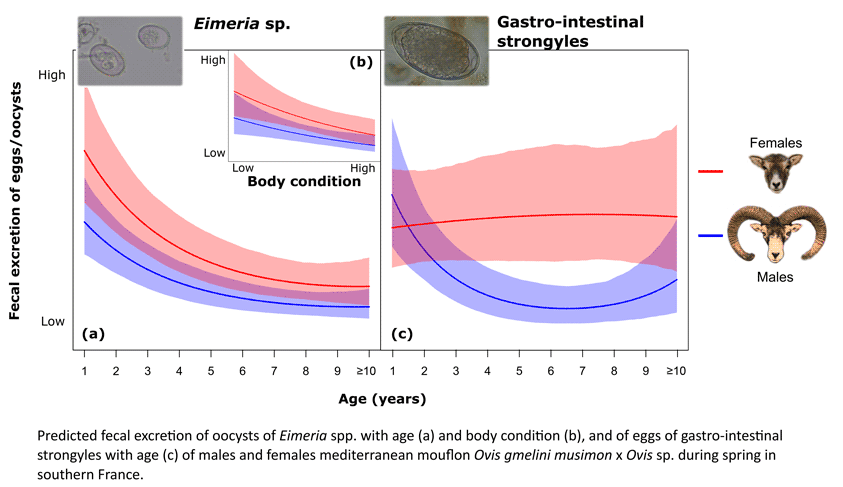Article contents
Reproductive females and young mouflon (Ovis gmelini musimon × Ovis sp.) in poor body condition are the main spreaders of gastrointestinal parasites
Published online by Cambridge University Press: 17 February 2021
Abstract

Several individual, environmental and parasitic factors can influence the impacts of parasites on host's fitness and on host's ability to transmit these parasites to new hosts. Identifying these factors and the individuals who play a greater role in parasite transmission is of main concern for the development of parasite control strategies. In the present study, we aimed to describe the diversity of gastrointestinal parasites and to identify the individual factors influencing the faecal spreading of parasites in a free-ranging population of Mediterranean mouflon. From the analysis of 433 faecal samples, we found Eimeria spp. and gastrointestinal strongyles (GIS) were the most common parasites (>94%). The faecal oocyst counts of Eimeria spp. were the highest during the first years of life. It was 1.6 times higher in females than in males and 2.5 times higher in individuals in poor than in good body condition. Similarly, the faecal egg count of GIS was higher in females and decreased with age, but only in males. Finally, reproductive females had GIS faecal egg count values 2.6 times higher than non-reproductive females. Management strategies of parasites should thus primarily focus on reproductive females and young individuals in poor body condition as they represent the main contamination source of the environment.
- Type
- Research Article
- Information
- Copyright
- Copyright © The Author(s) 2021. Published by Cambridge University Press
References
- 8
- Cited by





